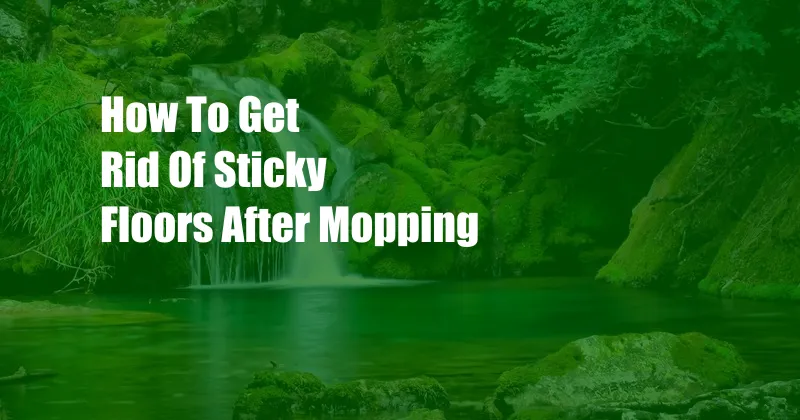
How to Get Rid of Sticky Floors After Mopping: A Comprehensive Guide
Sticky floors are a common problem that can be caused by a variety of factors, including using too much soap, not rinsing the floor properly, or leaving water on the floor for too long.
Whatever the cause, sticky floors are a nuisance and can be difficult to clean. But don’t worry, there are a few simple steps you can take to get rid of sticky floors and keep them clean.
Why Are My Floors Sticky After Mopping?
There are a few reasons why your floors may be sticky after mopping. One possibility is that you are using too much soap. Soap can leave a residue on your floors, which can make them feel sticky. Another possibility is that you are not rinsing the floor properly. If you don’t rinse the floor thoroughly, the soap residue will remain on the floor and make it sticky.
Finally, you may be leaving water on the floor for too long. This can cause the water to evaporate and leave behind a sticky residue. To avoid this, make sure to dry the floor thoroughly after mopping.
How to Get Rid of Sticky Floors After Mopping
If you have sticky floors, there are a few things you can do to clean them.
- Use a vinegar solution. Vinegar is a natural cleaner that can help to dissolve the soap residue that is causing your floors to be sticky. To make a vinegar solution, mix one cup of vinegar with one gallon of warm water. Mop your floors with the vinegar solution and then rinse the floor thoroughly with clean water.
- Use a commercial floor cleaner. There are a number of commercial floor cleaners that are designed to remove sticky residue. These cleaners typically contain a degreaser, which can help to break down the soap residue. Follow the directions on the bottle of the floor cleaner to use it properly.
- Use a steam mop. A steam mop can help to remove sticky residue by using hot steam to loosen the residue. Steam mops are also great for killing bacteria and germs.
Tips and Expert Advice
Here are a few additional tips and expert advice for getting rid of sticky floors:
- Use a microfiber mop. Microfiber mops are great for picking up dirt and dust, and they can also help to remove sticky residue.
- Change your mop water frequently. As you mop, the water will become dirty and less effective at cleaning your floors. Be sure to change the mop water frequently to ensure that you are using clean water to clean your floors.
- Dry your floors thoroughly after mopping. Leaving water on the floor can cause the water to evaporate and leave behind a sticky residue. Be sure to dry your floors thoroughly after mopping to avoid this problem.
FAQs on Getting Rid of Sticky Floors
Here are some frequently asked questions about getting rid of sticky floors:
- Q: Why are my floors sticky after mopping?
A: There are a few reasons why your floors may be sticky after mopping. One possibility is that you are using too much soap. Another possibility is that you are not rinsing the floor properly. Finally, you may be leaving water on the floor for too long. - Q: How can I get rid of sticky floors?**
A: There are a few things you can do to get rid of sticky floors, including using a vinegar solution, using a commercial floor cleaner, or using a steam mop. - Q: How can I prevent my floors from getting sticky?
A: There are a few things you can do to prevent your floors from getting sticky, including using a microfiber mop, changing your mop water frequently, and drying your floors thoroughly after mopping.
Conclusion
Sticky floors are a nuisance, but they are also easy to clean. By following the steps outlined in this article, you can get rid of sticky floors and keep your floors clean and fresh.
Are you interested in learning more about how to clean your floors? If so, check out our other articles on floor cleaning.